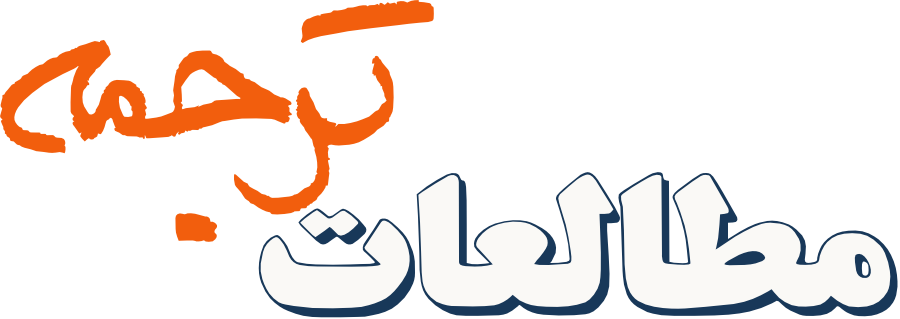روشهای ترجمۀ مجاز در «مثنوی معنوی»: ارتقاء الگوی لارسِن (1984)
چکیده
ترجمه با چالشهای بسیاری مواجه است. ترجمۀ مجاز یکی از این مشکلات است. به ندرت میتوان زبانی را یافت که آرایۀ مجاز در آن جلوهگر نباشد. تحقیق حاضر بر آن است که آرایه مجاز را در دفتر اول مثنوی معنوی مولانا و ترجمۀ انگلیسی آن به قلم مجددی (2004) بررسی و تحلیل کند. در این پژوهش، برای طبقهبندی و تحلیل روشهای ترجمۀ مجاز از الگوی لارسون (1984) به عنوان مدل اولیه استفاده شده است. در گام نخست، انواع مجاز و معادلهای انگلیسی آنها شناسایی شد، سپس روشهای مورد استفاده در ترجمه هر یک از مجازها دستهبندی و میزان بسامد هر روش تعیین گردید. در نهایت، تلاش شد تا مدل فعلی ارتقاء داده شود. طبق یافتههای تحقیق، «ترجمۀ تحتاللفظی» پربسامدترین و ترجمۀ «مجاز بهصورت مجاز و افزودن معنا» کمبسامدترین روش مورد استفاده بود. علاوه برآن، تحقیق حاضر نشان داد که مدل لارسِن الگوی جامعی نیست، زیرا تمام روشهای مورد استفاده مترجم را پوشش نداده بود. در تحقیق حاضر، چهار شیوۀ جدید (ترجمۀ تحتاللفظی، حذف، تعمیم و ویژهسازی) شناسایی و معرفی شد.
کلمات راهنما:
آرایه مجاز, مثنوی معنوی, مولانا, مجددی, الگوی لارسِن (1984)مراجع
Aaram, Y., Tayebzadeh, A., & Hassani Helm, H. (2016). An investigation into semantic hanjargorizi in respect to different metonymy types in selected poems by Molavi. The international conference of literature and Psychology. Faculty of Literature, the University of Hamadan. Accessed February 9, 2020 from www.academia.edu
Afrouz, M., & Mollanazar, H. (2016). Rendering the Islamic Concepts of the Holy Qur’an: Towards a More Comprehensive Model. Translation Studies Quarterly, 13(52), 61–76.
Afrouz, M. (2017). A Comparative-Interpretative Study of the Role of Native and Non-Native Translators in Preserving National Identity. Journal of Language and Translation Studies, 49(1), 41–55.
Afrouz, M. (2019). How Different Muslim Translators Render the Holy Qur’an into English? The Case Study of Sunni, Shia and “neither Sunni nor Shia” Translators. SKASE Journal of Translation and Interpretation, 12(1), 1–14.
Afrouz, M. (2020). Assessing equivalents selected by translators’ of ‘The Blind Owl’ based on componential analysis and semantic load of the words proposing a new analytical model based on data analysis. Journal of Language Research, 12 (37), 9–37. doi: 10.22051/jlr.2020.30075.1830
Afrouz, M, & Shahi, M. (2020). Translation after Wittgenstein. Perspectives, 28(1), 159–161.
Afrouz, M. (2021a). Boosting Carmen Valero Garcés (1994) model through exploring contemporary English translations of Hedayat’s surrealistic masterpiece. Contemporary Persian Literature, 10(2), 51–74. doi: 10.30465/copl.2021.6146
Afrouz, M. (2021b). Self-edition hypothesis: The case of multiple self-edited versions of modern literary texts. FORUM, 19(1), 1–23.
Al-Salem, R. (2008). Translation of Metonymy in the Holy Quran: A Comparative, Analytical Study. Unpublished doctoral dissertation. King Saud University, Saudi Arabia.
Guan, J. (2009). The Cognitive Nature of Metonymy and Its Implications for English Vocabulary Teaching. English Language Teaching, 2(4), 179–183.
Kamei, S.-i. & T. Wakao (1992). Metonymy: reassessment, survey of acceptability, and its treatment in a machine translation system. Paper presented at the Proceedings of the 30th annual meeting on Association for Computational Linguistics.
Lakoff, G. and M. Johnson (2003). Metaphors we live by. Chicago: The University of Chicago Press.
Larson, M. L. (1984). Meaning-based translation: A guide to cross-language equivalence. Lanham: University press of America.
Mojaddedi, J. (2004). The Masnavi: Book one. Oxford world's classics: Oxford University Press, USA.
Molavi, M. J. M. B. (n.d.). The First Book of the Masnavi. Accessed January 12, 2020 from www.torbatjam.com
Shamisa, C., & Anvari, H. (1993). Maani va Bayan. Tehran: Payame Noor.
Zheng, H. (2014). On Metonymy and Its Translation. World Journal of English Language 4(4), 28.
Downloads
چاپشده
ارجاع به مقاله
شماره
نوع مقاله
DOR
مجوز
Copyright Licensee: Iranian Journal of Translation Studies. This article is an open access article distributed under the terms and conditions of the Creative Commons Attribution–NonCommercial 4.0 International (CC BY-NC 4.0 license).





